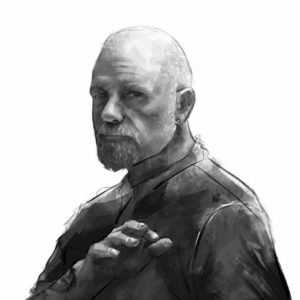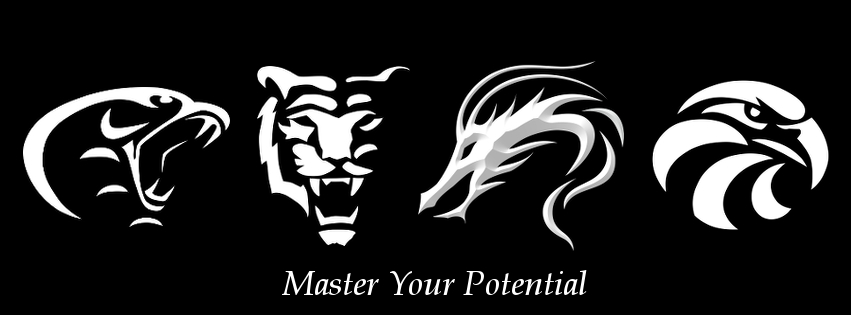When I learned to type I practiced the sentence “the quick red fox jumps over the lazy brown dog” because it uses every letter and if you can type it without looking you have the alphabet cracked. When my kids learned to play musical instruments I remember them going up and down the scales and arpeggios. These, not only ensured that they learned how to play every note, but they got used to various sets of notes that tend to be used together according to the signature key of the tune.
The martial arts have traditionally done the same sort of thing. There are a number of techniques to be learned and so they have been put into set routines called kata, forms or patterns. Sometimes these movements have been grouped according to difficulty; so for example, one might have a first set of techniques that are performed standing still, using only the arms. Then one might have a set of techniques that involve moving past or around an opponent’s guard and another set that involve dealing with multiple opponents and complex actions of simultaneous attacking and defence. This would give you a logical series of patterns of increasing difficulty which is ideal for a training scheme that would take a student from novice to skilful practitioner.
Sometimes a music teacher will give a student a piece to play that is chosen deliberately because some of the transitions from one note to another are difficult and playing it will improve the students’ dexterity. In the same way, sometimes a pattern has been developed in martial arts just because its difficult transitions will improve a student’s dexterity or balance. Sometimes a pattern is simply beautiful in its grace; sometimes it increases subtlety, or strength or speed. But here is the problem. When performing live a musician knows that their nerves can make playing difficult, so they practice a piece many times so they can play it without thinking. When they become masters of their instrument and are practiced at performing live, they can stand in front of thousands and play from a score they have never seen before and do it without nerves. Think of the best man’s speech or the play you were in, or the business presentation. Unless you have it rehearsed your nerves will render you useless. Obviously if you’ve been public speaking or acting for years, you can do these things off the cuff without nerves. Most people do not find themselves in life-threatening combat situations on a regular basis, or at least not often enough for them to do so without nerves. Even if they compete in tournaments, this won’t help them much in eliminating nerves, there is no comparison to a real assault. When attacked, most normal people will be so pumped with adrenaline that fine motor coordination is impossible and they are unable to do any more than act instinctively.
In real life attacks, normal people will be capable of only doing what they have practiced so much that the movements are instinctive. Imagine a musician who has only practiced scales. They are asked for the first time, without warning, to come up on stage to play in front of thousands. They can’t think, they are dizzy with nerves, tunnel vision kicks in, they can’t understand what they are being told, the instrument thrust into their hands is an alien thing. They hold it in the usual position and the only thing they can do is play the scales as they can do this without thinking; it’s programmed into their muscles, as an unconscious memory. This is how it is for many trained martial artists when they are attacked. The scales won’t entertain and the patterns you have learned might not help you defend yourself.
Let me give you a couple of examples to put this in perspective. These come from a man who trains police officers how to use their guns in the US. Some years ago he had been running classes on arrest procedure. The recruits would role-play exactly what to say to make sure that when they were nervous out there in the real world they would get it right. They would point their finger like a gun and tell the pretend bad guy to put their hands on a wall or car bonnet, spread their legs and then inform them of their rights etc. It was with dismay that after the new recruits had arrested their first real criminals he heard that one had gone through the entire procedure with his gun still in his holster, but a stern finger pointed threateningly at the dangerous bad guy. The fact that he had done it so convincingly that the bad guy had done as he was told is beside the point and the topic of a different article. If the bad guy hadn’t also been so nervous that he wasn’t thinking straight either, it could have gone badly wrong.
Another example from the same source is of a police officer who, having been taught by his martial arts instructor a technique for rapidly disarming someone pointing a hand gun, had practiced resolutely for months. He would practice with his wife, his friends, his colleagues. They would point a hand gun at him at close range, with lightning speed, he would disarm them, hand back the gun, then do it again, and again, and again. One day he and his partner were called to a supermarket where an armed man was threatening the staff and demanding cash. They split up, he went up one isle, his partner another. As he came around the end of the isle, there, face to face was the gunman with a pistol pointing straight at the officer’s heart. Without the slightest pause, the officer’s hands moved like lightning snatching the gun away and before the bad guy had chance to think, his gun had been removed and was now pointing at him. To his astonishment however, before he had chance to put his hands up and exclaim ‘fair cop guv’ or whatever American bad guys say, the officer just gave him his gun back; exactly the way he had practiced a thousand times. Had it not been for the other officer coming around the end of another isle at that point, his automated action would have killed him.
Over years of working in nightclubs and pubs I have seen and taken part in hundreds if not thousands of physical confrontations. There are some things one can generalise about. Most fights are over within a couple of seconds. If they continue beyond two seconds, it’s either because the combatants don’t really want to be fighting, but feel obliged to, or it’s because the fight is over and one is simply now beating the other up. The guys who like fighting and do it week after week are usually not very skilled, but they tend to have a short combination that works consistently, so they use it and if they need to, repeat it. They tend to win because past victories have given them confidence, they rarely come up against a skilled fighter and they don’t stop to think, they just fall into their practiced combination.
At the Norwich Kung Fu Academy we teach a style called Tao Te Kung Fu which has been developed using techniques predominately, but by no means exclusively, from the Kung Fu style of Wing Chun. Wing Chun is almost certainly the most popular Kung Fu style practiced in Europe and the USA, not least, I suspect because the legendary Bruce Lee originally practised Wing Chun.
“Tao Te” means the virtuous way, and refers to the development of the style within a modern context. There is always the danger that if one becomes entrenched in a tradition eventually lessons look like a sort of historical re-enactment. Tao Te Kung Fu takes advantage of the most recent developments in the neuroscience of skill acquisition and includes influences from other traditions not available to earlier practitioners and is refreshed with decades of real life experience in the security industry.
Many martial art styles require such levels of conditioning, strength and fitness that only young strong men can really excel; and they will often pay the price in later years as the physical punishment of their training takes its toll. Because Tao Te Kung Fu was developed to enable a smaller, weaker fighter to overcome a larger and stronger opponent it is ideally suited to people of all sizes and ages. Not being dependent on vast strength, Tao Te Kung Fu puts an emphasis on speed, with many fast striking combinations and close-range techniques. The training will help you become stronger, fitter and more supple, but your capacity to excel in Tao Te Kung Fu is not dependent on these.
The traditional Wing Chun forms include all the techniques of the style, but are long, complex and often require a lot of work to simply extract a technique and work out its application. Few of the techniques can be used as they appear in the forms which means the student is learning and practicing unhelpful muscle memory. In Tao Te Kung Fu the forms incorporate the techniques in the way they will work in real life.
Each 8 part form is short enough to be remembered easily (this is martial arts, not memory training), and practiced until it can be done without thinking. Each form is put together in a way that if used automatically would deliver a conflict winning combination.
Each of the forms, of course, vary in difficulty but they are grouped into foundation, intermediary and advanced levels. Each group of forms develops the coordination needed to move on to the next.
Each form is of eight elements that mirror the eight elements of the I Ching trigrams, they progress from defensive to offensive with intervening transitional elements. (Most people won’t fully understand that last sentence until they have learned a few of the forms) This structure gives a logical system that covers every unarmed Tao Te Kung Fu Technique.









